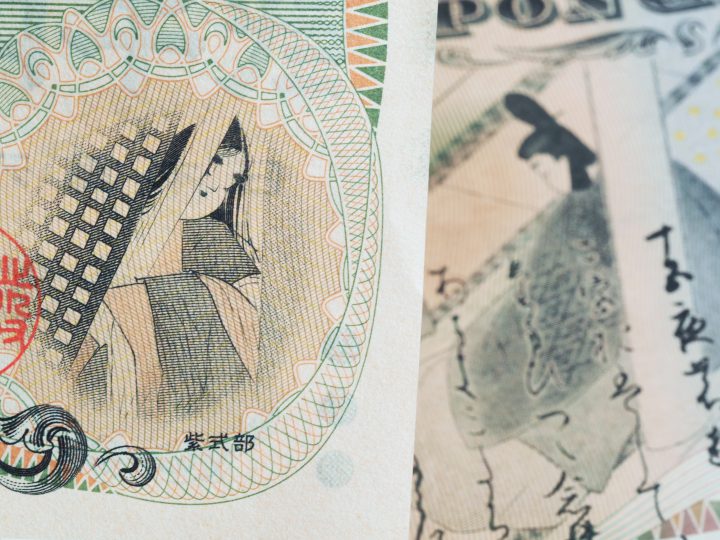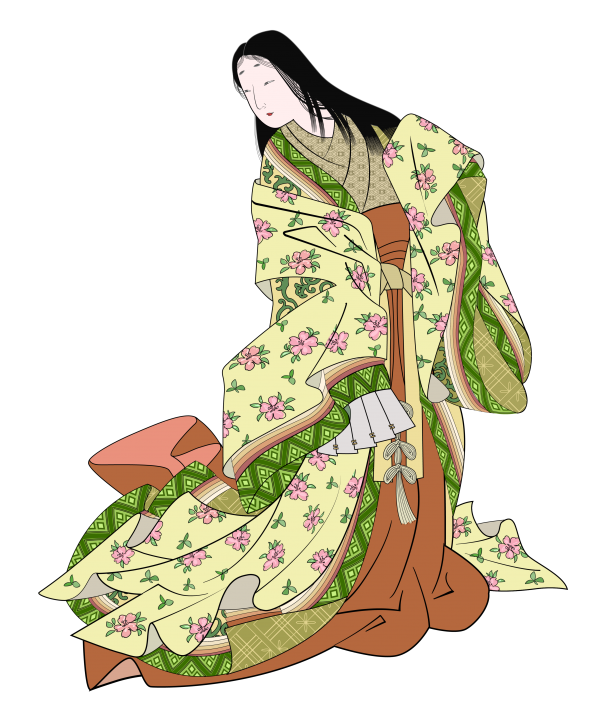
The 2024 NHK Taiga drama “To the Shining You” depicts the life of Murasaki Shikibu. Even though I’m not very familiar with that era, I find it intriguing and have been watching it with interest. In the second episode, Ono no Komachi’s name was mentioned during a scene where waka poetry was being recited. Because we have been commissioned to produce a cut-paper shrine seal related to Zuishin-in, associated with Ono no Komachi, I decided to research a bit about Ono no Komachi and Murasaki Shikibu.
Historical context and cultural impact
Murasaki Shikibu and Ono no Komachi are known as literary figures representing different eras of Japan. Murasaki Shikibu lived during the mid-Heian period (late 10th to early 11th century) and is famous as the author of “The Tale of Genji.” On the other hand, Ono no Komachi was a poet active about 200 years earlier, from the late Nara to the early Heian period.
Women in this era often received education and actively participated in literary activities. The works of Murasaki Shikibu and Ono no Komachi skillfully reflect the delicate emotions and aesthetic sensibilities of the aristocratic society of their time, and their influence extends to the modern day.

Comparison of works and styles
Murasaki Shikibu’s “The Tale of Genji” is known as a lengthy narrative rich in plot and psychological depth. In contrast, Ono no Komachi is highly regarded as a master of short poetry, leaving behind numerous works that delicately express love and the beauty of nature through refined emotions.
While Murasaki Shikibu’s works delve deeply into complex human relationships and emotions, Ono no Komachi’s poetry is known for its brevity and richly emotive imagery. Although their styles differ, both share a commonality in exploring the aesthetic sensibilities of the Heian period and the inner worlds of women.
Connection with Buddhism
In Japan’s Heian period, Buddhism had a significant influence on society, an impact that is also evident in the works of Murasaki Shikibu and Ono no Komachi. “The Tale of Genji” incorporates themes of Buddhist teachings and liberation from suffering.
Ono no Komachi’s poems often reflect the transience of this world and the Buddhist concept of impermanence. Buddhism serves as a cultural backdrop that provides deep insights into human emotions and fate in both authors’ works.
The Legacy and Modern Influence of Both Figures
Murasaki Shikibu and Ono no Komachi are credited with establishing the status of women in Japanese literature. “The Tale of Genji” is widely recognized as a classic of world literature, and Ono no Komachi has become a legendary figure in the history of Japanese poetry.
In modern literature and culture, the influence of these women remains profound, and they are respected as symbols of the richness of female sensibility and expression. Their works continue to inspire people across generations.
Two Legends
Ono no Komachi is also famously synonymous with unparalleled beauty. One of the most well-known tales about her involves the legend of Fukakusa no Shōshō’s hundred nights of visits. In this story, Fukakusa no Shōshō, a suitor of Komachi, is tasked with visiting her for 100 consecutive nights to win her affection, but tragically dies on the 99th night due to a heavy snowfall. Additionally, it’s said that Komachi lived in poverty during her later years when her beauty faded, adding a contrasting aspect to her life story and deepening the legend.

Another famous legend suggests she maintained her youth and beauty using water from a special well, believed to possess the power to preserve her beauty. This tale reflects people’s admiration and the mystique surrounding Ono no Komachi’s legendary beauty.
Zuishin-in and Ono no Komachi
Zuishin-in, located in Yamashina Ward, Kyoto City, is a Shingon Buddhist temple. The temple grounds contain sites related to Ono no Komachi, such as “Keshō no Ido” (the Makeup Well) and “Komachi Buntsuka” (Komachi’s Literary Mound). Additionally, Zuishin-in is known for its plum blossoms and hosts the “Hanezu Dance” event on the last Sunday of March each year. This event, inspired by the story of Ono no Komachi and Fukakusa no Shōshō’s “Hundred Nights Visit,” features girls in vibrant costumes performing dances.

The official website introduces a book about Ono no Komachi titled “Komachi.” This book compiles legends of Komachi passed down through generations at Zuishin-in, presenting her life in a fantastical manner.
Why not take this opportunity to visit Zuishin-in? Just don’t forget your stamp book.
For more details, visit Zuishin-in’s official website at https://www.zuishinin.or.jp/
